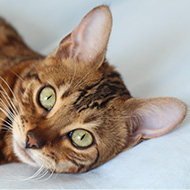Study pinpoints origins of feline domestication

Analysis indicated a pattern of dispersal outwards from regions such as the Levant and the Nile Valley.
A study from the University of Missouri has helped to identify the first domestication of cats using genetic analysis.
Feline geneticist Professor Leslie A. Lyons collected and analysed DNA from cats in and around the Fertile Crescent – the areas surrounding the Tigris and Euphrates rivers in the Middle East.
Nearly 10,000 years ago, humans settling in the Fertile Crescent made the first switch from hunter-gatherers to farmers, and there developed close bonds with the cats, who would eat the rodents.
Analysing the DNA collected, the study found that this lifestyle transition was the catalyst for the domestication of cats.
Comparing nearly 200 different genetic markers in DNA from cats in and around the Fertile Crescent area, as well as throughout Europe, Asia and Africa, researchers surmised that cats were likely first domesticated in the Fertile Crescent, and then migrated with humans across the world.
Explaining the study, Professor Lyons said: “One of the DNA main markers we studied were microsatellites, which mutate very quickly and give us clues about recent cat populations and breed developments over the past few hundred years.
“Another key DNA marker we examined were single nucleotide polymorphisms, which are single-based changes all throughout the genome that give us clues about their ancient history several thousands of years ago.
“By studying and comparing both markers, we can start to piece together the evolutionary story of cats.”
Published in Hereditary, 'Genetics of randomly bred cats support the cradle of cat domestication being in the Near East' is open access.



 BSAVA is to partner with BVA Live (11-12 June 2026) to champion clinical research.
BSAVA is to partner with BVA Live (11-12 June 2026) to champion clinical research.